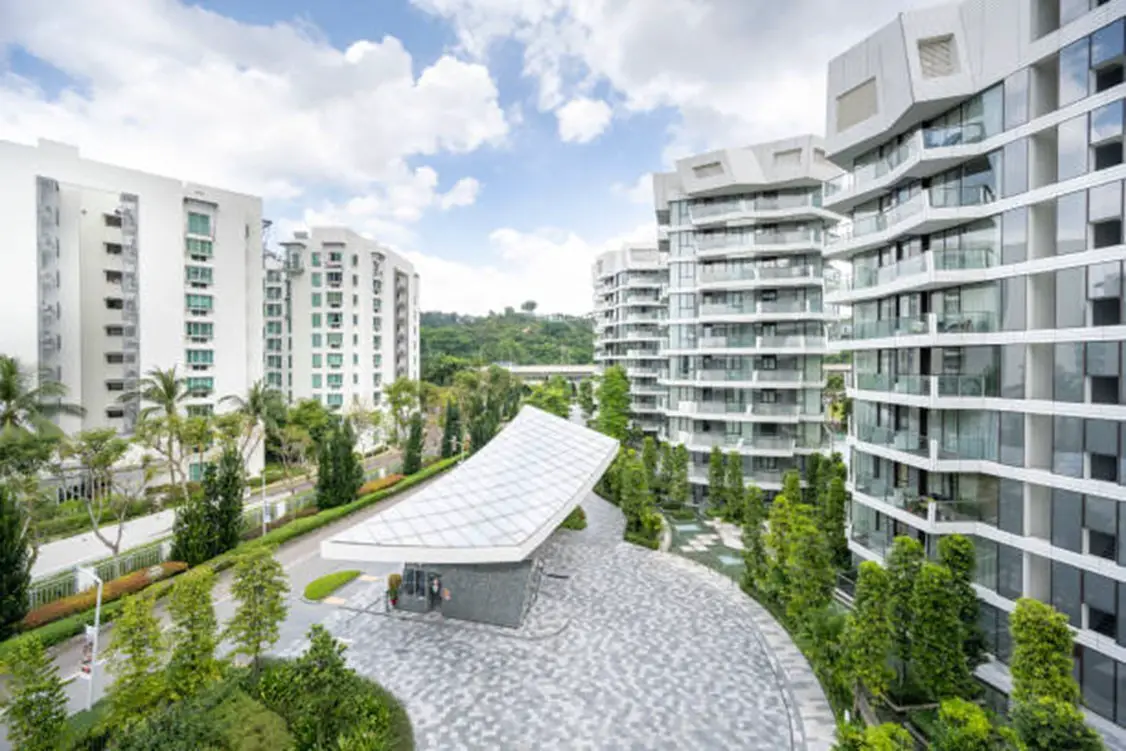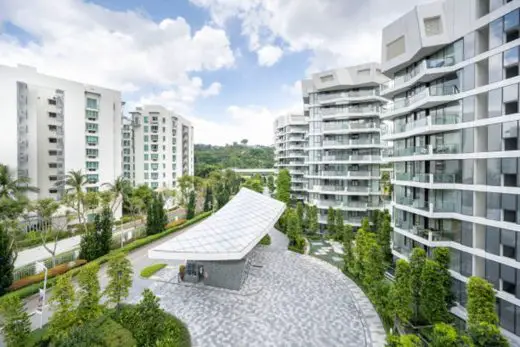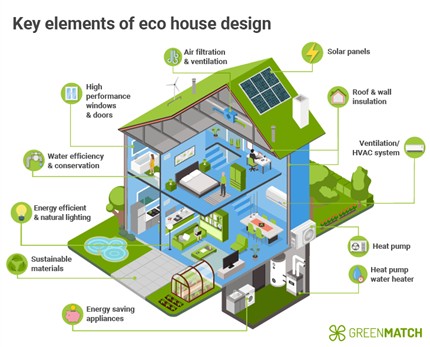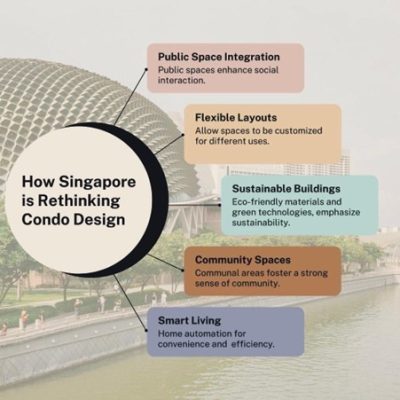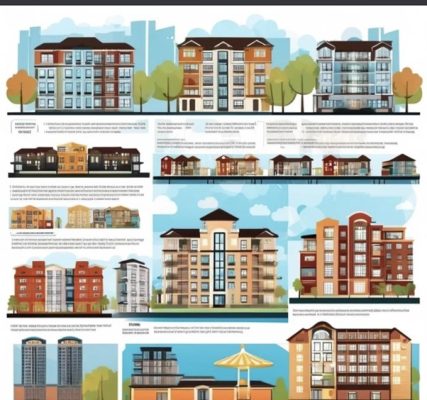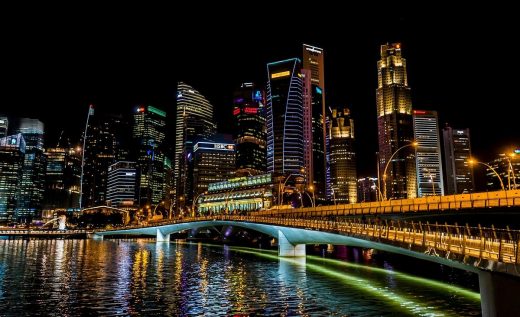Singapore reformative condo designs development, Southeast Asian investment property
Singapore Reformative Condo Designs
9 February 2024
Singapore’s Reformative Condo Designs: Lessons for the World
Singapore has done more than transform its skyline; it’s redefined urban living.
With a mix of innovation, sustainability, and smart design, Singapore’s approach to condominium architecture is one that cities around the globe are starting to envy—and emulate.
So, what makes Singapore’s condos so special, and what can the rest of the world learn from this tiny powerhouse?
Why Singapore is Crushing It in Reformative Architecture
Simple: they’ve turned limitations into superpowers.
Efficient Utilization of Land
First off, when you’ve got limited land, you learn to get creative fast.
Singapore’s architects are the wizards of vertical living, stacking not just apartments but entire communities.
Sleek, green towers like Chuan Park make city life not only possible but downright pleasant.
Building Smart
Who else could turn a concrete jungle into a literal garden?
But it’s not just about building up; it’s about building smart.
Singapore’s government doesn’t just talk about sustainability—they bake it into every blueprint.
From eco-friendly incentives to strict land-use planning, they’ve created a playground where innovation isn’t just encouraged; it’s mandatory.
And let’s face it: when the rules push you to be better, everyone wins.
Reuse, Recycle
Finally, Singapore has mastered the art of blending the old with the new.
They don’t just bulldoze history—they recycle it.
By adapting and reusing old buildings, they preserve their cultural soul while embracing modernity.
It’s this cocktail of innovation, efficiency, and heritage that’s got the world taking notes.
How Singapore Uses These Techniques
The Garden in the Sky
First up, Singapore’s mastery of integrating green spaces into high-density areas is a game-changer.
In a city where space is as precious as gold, developments like Chuan Park Singapore have turned concrete jungles into literal jungles.
These vertical gardens don’t just look good—they improve air quality, reduce urban heat, and give residents a slice of nature without leaving the city.
Cities choking on smog and sprawl should take note: going green isn’t just about parks; it’s about weaving nature into the fabric of urban life.
Up, Not Out
When you’re on an island with more people than room, you learn to build up, not out.
Singapore has perfected the art of vertical living, turning condo complexes into vertical neighbourhoods where everything you need—shops, gyms, even schools—is just an elevator ride away.
Take the Chuan Park Showflat and Marina One Residences.
These projects combine living, working, and playing into a compact, efficient space.
The lesson here? High density doesn’t have to mean low quality.
For cities facing land shortages and urban sprawl, Singapore’s vertical ecosystems are a blueprint for sustainable living.
Sustainability: Not Just a Buzzword
In Singapore, sustainability isn’t an afterthought—it’s the foundation.
Projects like Eco Sanctuary showcase how to build with the environment in mind, featuring everything from solar panels to rainwater harvesting systems.
These aren’t just eco-friendly; they’re cost-efficient, slashing energy bills while saving the planet.
As climate change looms large, cities worldwide should follow suit, making sustainability a core principle in residential design.
Building Communities, Not Just Condos
Singapore’s condos aren’t just about living spaces; they’re about building communities.
The design ethos here encourages interaction with shared spaces like rooftop gardens and communal lounges.
This is a stark contrast to the isolated living that’s common in many Western developments.
By fostering a sense of community, Singapore’s condos are tackling one of modern life’s biggest challenges: social isolation. The takeaway?
Design for people, not just profits, and watch neighbourhoods transform into thriving communities.
Adaptive Reuse: The Old Meets New
As mentioned earlier, in Singapore, innovation walks hand-in-hand with preservation.
The city’s adaptive reuse of buildings—transforming old structures into modern condos while preserving their historical charm—is a masterclass in balancing the old with the new.
Cities rich in history can learn from Singapore’s ability to blend the past with the future, ensuring that heritage and progress coexist harmoniously.
Examples of Singapore’s Influence on Global Architecture
Let’s take a whirlwind tour of how different countries are taking a page out of Singapore’s playbook and why.
China: Reaching for the Sky (and the Green)
In China, where skyscrapers sprout like bamboo, Singapore’s vertical living concept is right at home.
Shenzhen and Shanghai are leading the charge, stacking not just apartments but entire lifestyles into high-rise towers.
The Green City project in Tianjin? It’s a clear nod to Singapore’s Marina One Residences and Chuan Park Condo.
But why is China so keen?
Simple. With a population that could fill several countries, they need solutions that save space, reduce pollution, and keep a bit of green in the mix.
India: Growing Green Amidst the Chaos
India’s megacities, like Mumbai and Bangalore, are finding inspiration in Singapore’s sustainable condo designs.
The Lodha World Towers aren’t just tall—they’re smart, green, and community-focused.
In a country where urbanization is racing ahead, India is borrowing Singapore’s tricks to balance growth with sustainability.
It’s a race to keep cities livable while the population booms and Singapore’s playbook is a winner.
United Arab Emirates: Marrying Luxury with Sustainability
In the UAE, where extravagance is the norm, Singapore’s elements of green architecture has found a luxurious twist.
Take Dubai’s Sustainable City—a blend of luxury and eco-friendly living that mirrors Singapore’s ethos but with a Middle Eastern flair.
Solar panels, energy-efficient systems, and lavish green spaces?
Check, check, and check.
The UAE isn’t just going green; it’s doing so with style, aiming to be the poster child for sustainable luxury in the region.
Australia: Building Communities, Not Just Buildings
Cities like Melbourne and Sydney are taking notes on community-centric design from Singapore.
Projects like Nightingale Housing are transforming the high-density game by putting people first.
Shared spaces, energy efficiency, and affordability are the name of the game, echoing Singapore’s approach to creating neighbourhoods, not just condos.
In a world where social isolation is a growing concern, Australia’s adoption of these designs is a step towards more connected, vibrant communities.
Canada: Balancing Density with Livability
In Canada’s pricey urban hubs like Vancouver and Toronto, the struggle to balance density with livability is real.
Enter Singapore’s biophilic designs, which are helping to shape projects like Vancouver House.
These developments are proving that high-rise living doesn’t have to mean sacrificing green spaces or quality of life.
For Canada, it’s all about making sure that as cities grow taller, they also grow smarter and greener.
Why the World is Watching Singapore
So why are these countries so eager to follow Singapore’s lead?
Because they’re facing the same challenges: rapid urbanization, environmental concerns, and the need for livable, community-focused spaces.
Singapore’s condos aren’t just buildings; they’re blueprints for the future, offering a roadmap to cities that want to grow sustainably without losing their soul.
By adopting Singapore’s strategies, these nations aren’t just improving their skylines—they’re crafting a better life for their citizens, one green, connected, and efficient high-rise at a time.
The Future of Reformative Condo Living
So, what does tomorrow hold for the condo life?
Spoiler alert: it’s going to be smart, green, and deeply connected.
Smart Condos: The Rise of the “Living” Building
Forget smart homes; we’re talking smart condos—entire buildings that anticipate your needs before you even realize them.
Imagine condos with Machine Learning systems that optimize everything from energy use to air quality in real time.
We’re looking at buildings that can adjust temperature and lighting based on your preferences or even suggest wellness routines based on your daily activity.
With a $150 billion valuation by 2027, expect smart condos to be a significant slice of this pie.
Eco-Living on Steroids
As the climate crisis intensifies, future condos will take sustainability to the next level.
Look out for more than just solar panels and rainwater harvesting—think entire buildings wrapped in green walls.
These structures will likely harness energy from every possible source and even generate food through vertical gardens integrated into the architecture.
The push for net-zero buildings is gaining traction, with nations like Germany and Sweden leading the way.
By 2040, the majority of new condos in developed nations may be net zero or even net-positive, producing more energy than they consume.
Hyper-Connected Communities
The future of condo living isn’t just smart and green—it’s also social.
Developers are increasingly focusing on creating hyper-connected communities where shared spaces are designed to foster interaction and collaboration.
Picture this: your condo complex might include co-working spaces, urban farms, maker spaces, and even communal kitchens.
In these environments, residents aren’t just neighbours; they’re part of a tightly-knit community that shares resources and ideas.
This is more than just a trend—urban planners predict that by 2030, most new residential developments will prioritize communal living.
Such initiative tends to be driven by millennials and Gen Z’s preference for shared experiences over isolated living.
Resilient Living: Ready for Anything
As the world becomes more unpredictable, so too will our homes.
The condos of the future will be built with resilience in mind and will be able to withstand extreme weather, power outages, and other disruptions.
This might mean condos equipped with microgrids, capable of generating and storing their energy or buildings constructed with materials designed to adapt to changing environmental conditions.
Singapore reformative condo designs Conclusion
The future is already upon us, and Singapore is leading the way.
With so much change happening within the last few years in the tech space, it’s no surprise architecture itself is being redefined.
While we can’t predict what’s next, current trends give us a keen eye into the future, and it’s looking pretty bright!
Comments on this guide to Singapore reformative condo designs development article are welcome.
Singapore Property
Singapore Architecture Design
Singapore Architectural Designs – chronological list
Design: The Design Abode
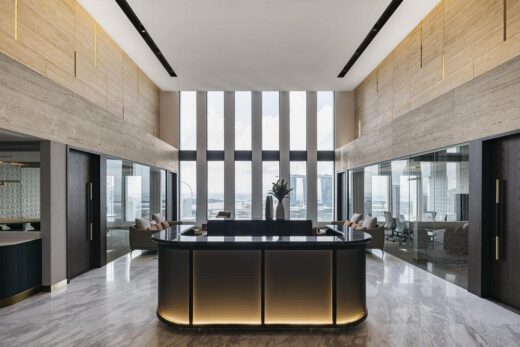
photo © Studio Periphery
YTC Corporation Office
Architects: BIG
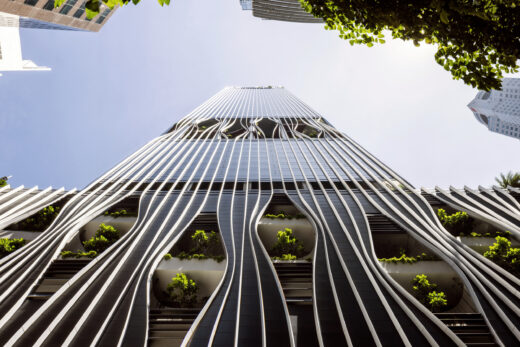
image : BIG Finbarr Fallon
CapitaSpring Tower
Residential Building Design
Residential Architecture Articles – selection below:
Condo Property
Condos – some recent posts on e-architect:
Why condos make good real estate investments
Cost Associated With Luxury Condo Maintenance
5 things to keep in mind when purchasing a condo
Comments / photos for the Singapore reformative condo designs development page welcome.

